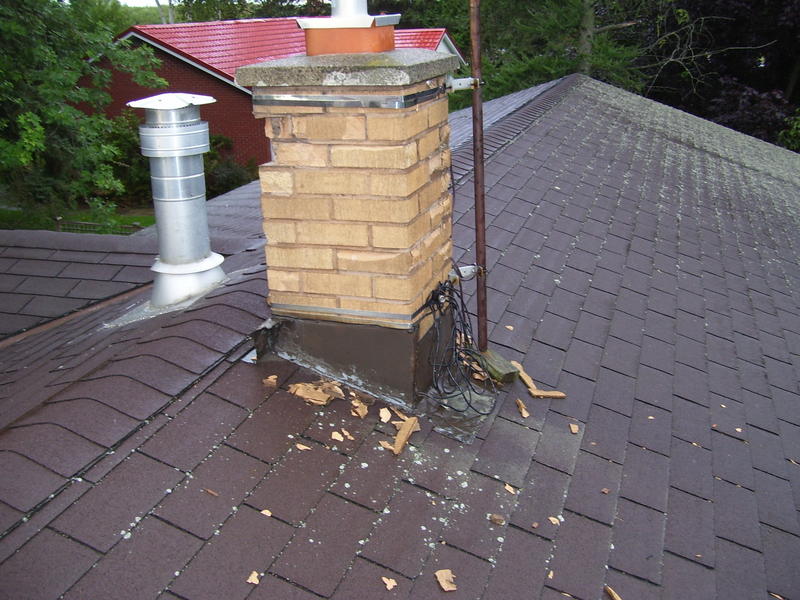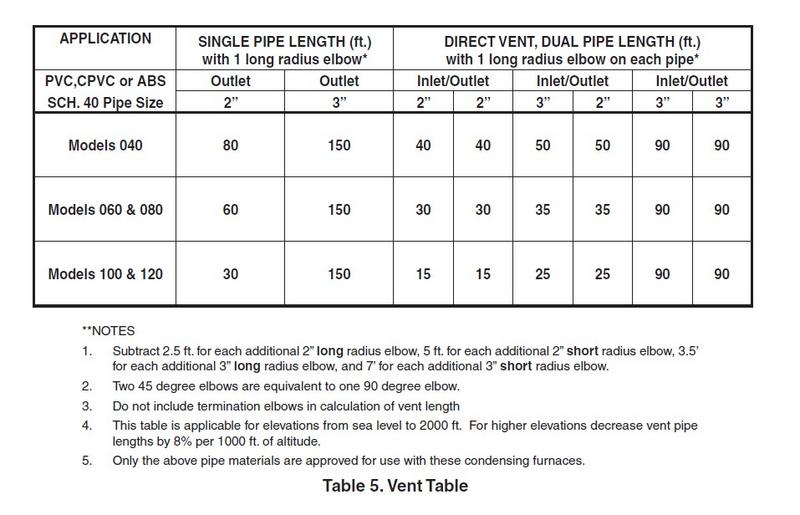He showed me what happens when you seal of a chimney like that. Condensation forms in the chimney and deteriorates the chimney from the inside out. It would be ok if you could find a way to put a proper rain cap on it so it could breath. Just his opinion and I trust it
see for more info
below is what can happen with a bad cap .
To repair this is lot of money $700;00 or more .
Never use tar to fix a cap
Thanks everyone for your input.
Returning to our example,
we consult Table 5 and determine that for an
80,000 Btu/h furnace the maximum vent length
for 2” diameter piping is 60 feet or for 3” diameter
piping is 150 feet. Note that the maximum vent
length given in Table 5 includes one long radius
elbow. Therefore, for our example, we have three
additional long radius elbows for which we must
add to our piping. Each long radius elbow is
equivalent to 2.5 feet, so we must add 7.5 feet
to our vent length. Therefore, the equivalent vent
length for our installation is 47.5 feet. We compare
this with the maximum vent length for 2” and 3”
diameter piping. For both cases, our equivalent
vent length is less than the maximum allowable
vent length, so for our “one-pipe” installation we
can use either 2” or 3” diameter piping.
Piping must be mechanically supported so that
its weight does not bear on the furnace. Supports
must be at intervals no greater than fi ve
feet, and at smaller intervals if necessary to
ensure that there are no sagging sections to
trap water. (See Figure 16.) It is recommended
to install couplings along the vent pipe, on either
side of the exterior wall. These couplings may
be required by local code.
Table 6 describes the maximum length of fl ue pipe
that can travel through an unconditioned space
or an exterior space. The total vent length must
not exceed the lengths noted on Table 5.
[ATTACH]
[/ATTACH]It has to create some condensation and chimney wall problems in long term. Too long.
Two questions.
First, why is condensation being mentioned when this is a sealed HE flue inside PVC? There are no exhaust gases being vented through the chimney so condensation is not an issue. Moisture and/or rain from above due to an improper chimney cap makes sense, but not condensation.
Second, why are people assuming the chimney is an unconditioned or exterior space? It appears from the picture this chimney runs through the center of the house which makes it a glorified chase for the PVC flue. This is no different than having a chase running through the center of the house or the basement joists and closed in with drywall, but we don’t consider those spaces unconditioned or exterior. The reality is the chimney brick will absorb and hold heat from the interior extremely well. If this were on the exterior of the house then perhaps unconditioned or exterior space rules would apply.
IMO perfectly legal but not best practice for these reasons.
Chimney’s require maintenance.
Chimney’s present potential leak points.
I say vent out the side of the house & tear the chimney down.
Oh, your WH vents through it as well?
When the time comes either buy an electric water heater or a gas fired WH with a power vent.
I agree with all of that Kevin, and to add, when considering the “leak Points” one must consider the potential for Mold growth inside the chimney. I have a close friend that has a Chimney company, and specializes in Chimney inspections. You should see all the nasty stuff he shows me from TypeII and other inspections. Sometimes more mold than I se on even a nasty mold inspection.
Jim
On that note, I’ve yet to see a water heater venting through a chimney which wasn’t drastically oversized. On a typical 3 inch water heater flue the maximum size it can vent through is 49 in.²(7 times rule). Few, if any, chimneys meet this requirement.


